Now China has acknowledged its need to reduce its reliance on coal, with overall consumption down from its peak in 2013.
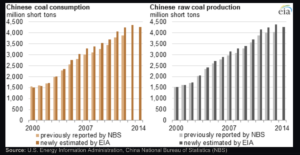
U.S. Energy Information Administration, China National Bureau of Statistics
Additionally, China’s coal plants are more efficient than the older plants in the United States. And China has made great strides in increasing its use of renewable energies, particularly in the hydroelectric sector.
However, these technological advances have not curbed China’s appetite, with coal consumption ticking back up in 2017. This return to coal has been attributed in part to a decline in hydroelectric productivity, which ironically is related to a fall in river flow precipitated by climate change. Making matters worse, China dramatically increased its coal imports from Mongolia and Russia in recent years, all while creating the illusion that they’ve cut off North Korea. On top of this, China’s rail system has kept up with the need to transport this coal over long distances. Rail transports 55% of coal in China compared to 80% a decade ago.
Perhaps most problematic of all, China struggles to ensure that the coal mines it aims to close actually shutter.
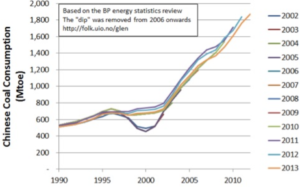
BP Revisions of China Emissions
Historically, BP (and China itself) has revised its initial estimates upwards after it became apparent that China had not met its coal mine closure targets. China’s rural provinces rely on coal for their economy. From 2000-2015, urban use of coal actually declined while rural use increased. These rural areas resist the national government’s call to curb coal plants by continuing to finance their projects. Just last year, China converted 1.2 million rural homes to natural gas, but was only to be able to supply the fuel to 1/3 of these homes, resulting in their continued authorization of coal burning.
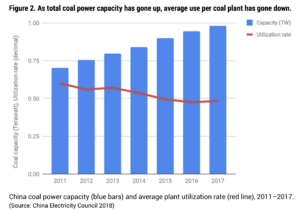
Tsunami Warning
Complicating matters, China does not appear to utilize its coal plants efficiently, with utilization falling below 50% in 2016.
So how can China truly cut back on its unhealthy obsession with coal? To do so, China needs to further invest in renewables beyond hydropower, in particular solar and wind. If swings in climate change diminish the impact of hydropower, China must diversify its energy portfolio.
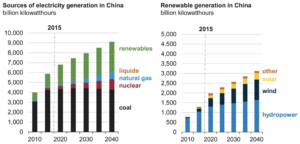
International Energy Outlook 2017
Forecasts are rosy, but up until now China has relied almost exclusively on coal and hydropower for generating electricity. Additionally, China must find more efficient ways to transport its coal, since it can’t eliminate its use over night. The Inner Mongolia-Jiangxi Railway is progressing, but much work remains.
There are reasons to be hopeful. Carbon Tracker forecasts that 100% of Chinese coal capacity will cost more to operate than renewables in 2030 (that number is 33% today).
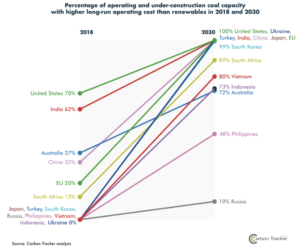
Powering down coal: Navigating the economic and financial risks in the last years of coal power
As renewable energy becomes more cost-effective over time, financial incentives for the status quo diminish. And as China continues to urbanize, its reliance on coal should fall. But none of that matters unless China takes the necessary steps to reign in its rural provinces, invest in solar and wind, and find more efficient energy delivery methods for its entire populace.